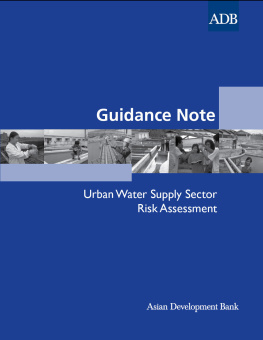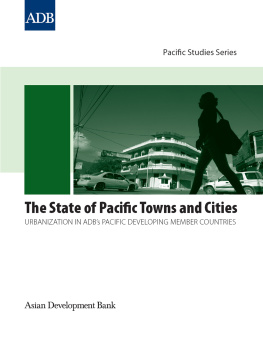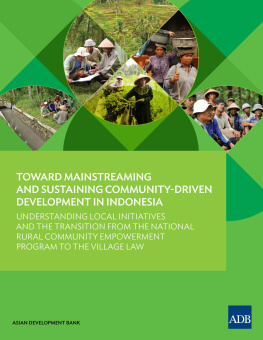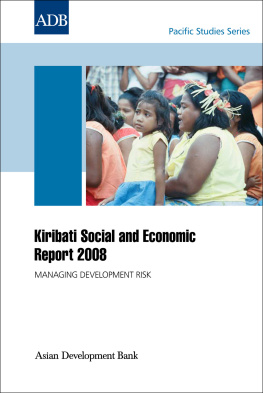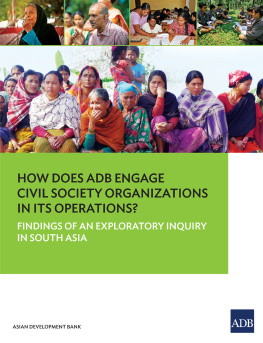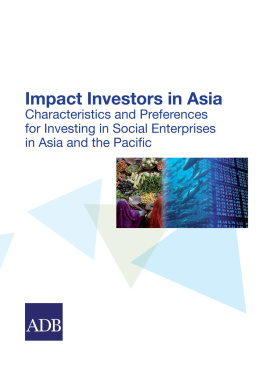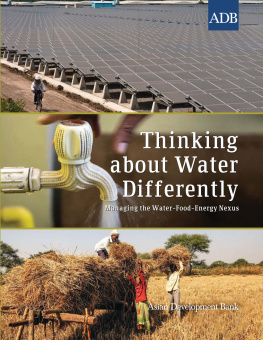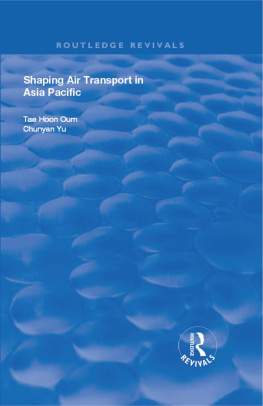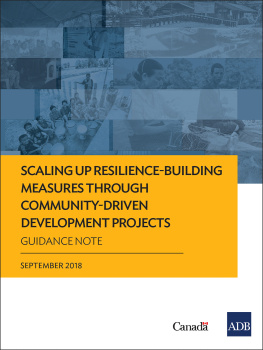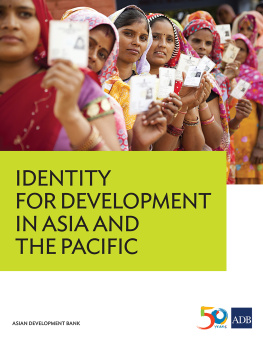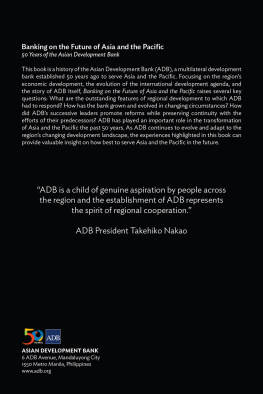Guidance Note
Urban Water Supply Sector
Risk Assessment
November 2009
Asian Development Bank
2010 Asian Development Bank
All rights reserved. Published 2010.
Printed in the Philippines.
ISBN 978-92-9092-167-7
Publication Stock No. TIM102714
Cataloging-In-Publication Data
Guidance note: Urban water supply sector risk assessment Mandaluyong City, Philippines: Asian Development Bank, 2010.
1. Urban water supply. 2. Risk assessment. I. Asian Development Bank.
The views expressed in this publication are those of the authors and do not necessarily reflect the views and policies of the Asian Development Bank (ADB) or its Board of Governors or the governments they represent.
ADB does not guarantee the accuracy of the data included in this publication and accepts no responsibility for any consequence of their use.
By making any designation of or reference to a particular territory or geographic area, or by using the term country in this document, ADB does not intend to make any judgments as to the legal or other status of any territory or area.
ADB encourages printing or copying information exclusively for personal and noncommercial use with proper acknowledgment of ADB. Users are restricted from reselling, redistributing, or creating derivative works for commercial purposes without the express, written consent of ADB.
Note:
In this publication, $ refers to US dollars.
Asian Development Bank
6 ADB Avenue, Mandaluyong City
1550 Metro Manila, Philippines
Tel +63 2 632 4444
Fax +63 2 636 2444
www.adb.org
For orders, please contact:
Department of External Relations
Fax +63 2 636 2648
Contents
List of Tables |
Foreword |
Abbreviations |
Introduction |
Key Features of the Sector |
Functions |
Institutional Features: Policy, Legal, and Regulatory Aspects |
Organizational Features |
Stakeholders |
Sector Risks |
Glossary |
List of Tables
1 Examples of Stakeholders in the Urban Water Supply Sector |
2 Urban Water Supply SectorExamples of Generic Risks |
Foreword
The Guidance Note: Urban Water Supply Sector Risk Assessment is part of a series of guidance notes for priority sectors and subsectors of the Asian Development Bank (ADB). A joint knowledge product of ADBs Governance and Water Communities of Practice, it offers a framework for mapping governance risks to inform the preparation of future country partnership strategies. Such a framework covers institutional aspects (policy, legal framework, and regulation); organizational aspects (planning, financial management, procurement, and human resources); and sector operations.
This guidance note also supplements ADBs Guidelines for Implementing the Second Governance and Anticorruption Action Plan. The purpose of the Second Governance and Anticorruption Action Plan is to improve ADBs performance in implementing the governance and anticorruption policies in the sectors and subsectors in which ADB is active, as well as to design and deliver better quality programs and projects.
A team from the Public Management, Governance, and Participation Division of the Regional and Sustainable Development Department initiated this guidance note. The team comprised Sandra Nicoll (director) and Brenda Katon (governance specialist, consultant). Portia Gonzales provided administrative support to the team.
ADBs Governance and Water Practice Leaders provided input and suggestions during the preparation and finalization of this guidance note. Other reviewers included Wouter Lincklaen Arriens, Anand Chiplunkar, Ellen Pascua, Barry Reid, and Hans van Rijn. Their input is truly appreciated.
The Department of External Relations extended timely assistance for copyediting, finalizing the cover design, and uploading this guidance note on ADBs governance website. A special word of appreciation goes to Robert Hugh Davis, Vicente Angeles, Rodel Bautista, Ma. Priscila del Rosario, Christine Orquiola, and Anthony Victoria.
Sandra Nicoll
Concurrent Practice Leader (Public Management and Governance) and Director, Public Management, Governance, and Participation Division Regional and Sustainable Development Department
Amy Leung
Concurrent Practice Leader (Water) and
Director, Urban and Social Sectors Division
East Asia Department
Abbreviations
| ADB | Asian Development Bank |
DMC | developing member country |
GACAP II | Second Governance and Anticorruption Action Plan |
Introduction
Objectives. This sector guidance note seeks to increase awareness of risks that can reduce the benefits from operations in the urban water supply sector. This guidance note aims to explain key sector features of urban water supply and identify entry points for mapping risks to development effectiveness in the sector. Generic risks are presented for illustrative purposes, and are not intended to be exhaustive.
This sector guidance note supplements ADBs Guidelines for Implementing GACAP II. It does not replace the guidelines. The guidelines provide a risk management framework and map out the process for assessing, managing, and monitoring risks. This note is meant to help staff in tailoring the generic sector risk assessment terms of reference found in the guidelines (Appendix 4), to consider risk vulnerabilities specific to the urban water supply sector.
This sector guidance note seeks to increase awareness of risks that can reduce the benefits from operations in the urban water supply sector
Structure of the Guidance Note. Section II describes the key features of the urban water supply sector. Section III outlines sector risks that include GACAP II priorities of public financial management, procurement, and combating corruption. These priorities can be assessed within frameworks of (i) institutional features (policy, legal framework, and regulation); (ii) organizational aspects (planning, financial management, procurement, and human resources); and (iii) sector operations (water harvesting and storage, water treatment, distribution, and customer interface).
Key Features of the Sector
Functions
The water supply sector is at the core of economic growth and social well-being. Water is indispensable to human survival. It is a quencher of thirst, a generator of power, a grower of crops, and a basic natural resource for daily existence. Without water, there can be no hydropower, no agriculture, and no cities. For poor households, access to water helps generate income and savings to exit poverty, mainly by releasing lengthy hours for fetching water to other productive activities. Water is paramount to inclusive economic growth, food security, and sustainable development.

